The Village Against the World
Nestled in farmland about 60 miles from Seville, Spain, is Marinaleda, a functioning utopia -- every villager has work and housing, mortgages are 15 euro a month, and foreclosures and police don't exist.Marinaleda, Spain, is a functioning utopia—every villager has work and housing, mortgages are 15 euro a month, and foreclosures and police don't exist.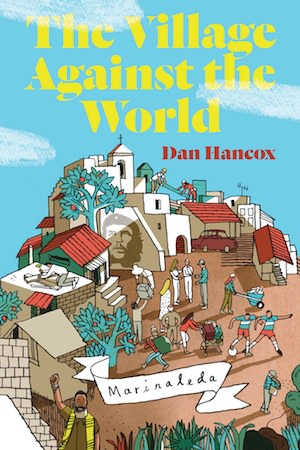
“The Village Against the World” A book by Dan Hancox
The most expensive government on the planet — ours — was shut down over budget concerns, health insurance and passive-aggressiveness. The inane partisan squabbling most acutely affected those with the most to lose — the people at the bottom of the economic pile. Meanwhile, grossly unequal division of wealth and power is a growing blight on the face of humanity. Dangerous mechanisms of financial ruin are nurtured by governments while they spew rhetoric about helping citizens. A future in which reckless economic exploitation will diminish seems highly unlikely.
But what if another world were possible? One in which the spoils of predatory capitalism, subsidized by central banks and federal policy, aren’t rapaciously consumed by a tiny minority at the expense of the vast majority of global citizens?
In his captivating new book, “The Village Against the World,” Dan Hancox shows, in lyrical and penetrating prose, that not only is it possible, but “an observable fact.” And so begins his tale of the alternative.
Nestled in farmland about 60 miles from Seville, Spain, in the region of Andalucía, exists Marinaleda, a village of 2,700 people. The cry OTRO MUNDO ES POSSIBLE — another world is possible — adorns a metal arch over its main avenue. For 30 years, the citizens of this tiny pueblo have fought and won a struggle to create a utopia in which everyone has a job and a home. Communism seems too dismissive and combative a term for Marinaleda’s ability to exist in defiance of a system that has shattered surrounding towns, and entire countries around the world.
“The year 2016,” Hancox writes, “will mark the 500th anniversary of Thomas More’s Utopia … But … how do you go from a fevered dream, an aspirational blueprint, to concrete reality?”
The answer unfolds as Hancox takes us on a trip that inspires one’s visual senses as he depicts the white-washed beauty of the village, one’s taste buds as he describes simple meals capped with thick bread doused in fresh local olive oil, and invites us to envision a collective life freed — as much as possible — from global crises, acquisition and power plays.
In Marinaleda, the Che Guevara stadium houses sporting events, oversized placards of doves decorate streets named for left-wing idols like Salvador Allende and Pablo Neruda, and “profits” from the local vegetable canning factory or olive oil co-op are used to enhance the village. Marinaleda’s main housing “development” consists of 350 casitas — modest homes self-built by their inhabitants, with materials furnished by the village. Mortgages are 15 euro per month. The village has, and needs, no police force.
For eight years, Hancox was fascinated with Marinaleda’s “miracle struggle,” transforming from “abject poverty” in the late ’70s (60 percent unemployment, and people going without food for days at a time) to the functioning “utopia” that it became.
Beyond Marinaleda, the economic suffering of Spain at the hands of a speculative overdrive unleashed by big U.S. banks and adopted by European ones, remains acute. It is made worse by austerity measures that punish citizens, while providing banks and bondholders with EU subsidies.
Youth unemployment sits at a sickening record high of 56.1 percent, second only to Greece’s 62.9 percent. Spain’s adult male unemployment at 25.3 percent tops all other EU countries.
The Spanish housing market remains in tatters, after catastrophic levels of overbuilding and leverage, complementing America’s housing bubble before it burst in 2007-2008. Just as in the U.S., Spanish banks foreclosed on slews of properties for which the population had been forced to overpay during the bubble, increasing homelessness.
The current economic crisis has left Spain with 4 million empty homes, and ghost towns on the outskirts of Madrid. In contrast, “Marinaleda brims with excitement and festivity during its famous annual ferias and carnivals,” though most of the time, “it is incredibly peaceful.” No one there has experienced a foreclosure.
“Even before the crisis descended on Spain, the wealth gap in Andalusia was a chasm,” Hancox informs us. “It has been so forever. It is a region where mass rural pauperism exists alongside vast aristocratic estates — the latifundios. It’s an oft-repeated bit of southern rural mythology that you can walk all the way from Seville, the Andalusian capital, to the northern coast of Spain without ever leaving the land of the notorious Duchess of Alba, a woman thought to have more titles than anyone else in the world. While 22.5 percent of her fellow Spaniards survive on only €500 a month, the duquesa is estimated to be worth €3.2 billion — and still receives €3 million a year in EU farm subsidies.”
It’s important to note, as Hancox does throughout the book, that the rich get more government subsidies than the poor do. This is, of course, not unique to Spain, which is one of the things that makes this book so important, and so timely.
Central to Marinaleda’s history, and Hancox’s book, is its mayor, Juan Manuel Sánchez Gordillo. He is a modern-day revolutionary, reminiscent, in appearance and inner fire, of Che Guevara. Sánchez Gordillo has been employing resistance techniques, including hunger strikes and occupations, for years. In 2012, he was dubbed the “Robin Hood of Spain” after he and a group of laborers refused to pay a supermarket for shopping trolleys filled with food, which they then distributed to local food banks. The action made headlines worldwide.Sánchez Gordillo, with “his trademark half-open shirt and prophet’s beard” and “almost messianic gestures,” is no stranger to polarized media attention. Charismatic and — until recently in his older age — tireless, he spent more than 30 years fighting alongside Marinaleda’s villagers for wealth redistribution, attracting and utilizing the press along the way.
Sánchez Gordillo became so well known that H&M, the clothing store chain, used his image as part of its “Zeitgeist” collection, plastering it on shirts with the words, “Food to the people! No world hunger!” But, as Hancox tells us, the company withdrew its design within four days, apologizing that it hadn’t intended “to take sides” and was “sorry if any customers have felt offended.” Even with capitalism ripping itself apart at the seams, “it was a sign,” Hancox writes, “of how charged the supermarket raids were … that a message like ‘food to the people’ might be deemed … offensive.”
In 1979, when Sánchez Gordillo was elected mayor of Marinaleda, the Franco era was over. Under Sánchez Gordillo’s leadership, farmers occupied part of a large estate, El Humoso, demanding possession of its land for farming that would provide locals with jobs. Surrounding land had been planted with labor-light crops like corn and sunflowers. The citizens of Marinaleda wanted to sow labor-intensive crops that would create more jobs, and establish a secondary processing industry. Their struggle was accompanied by a hunger strike in 1980 that drew the attention of the national press and TV, as well as the BBC, German TV, English, German, Catalan and French newspapers, and other media support. The event solidified Sánchez Gordillo’s nascent leadership. He became “la voz de los sin voz” — the voice of those without a voice. In April 1981, there was another hunger strike that secured a guarantee of four-days-per-week community employment for those without work. More strikes, protests and clashes with police continued for years.
Hancox recalls that Sánchez Gordillo once suggested to him that the House of Alba could invest their riches — from shares in banks and power companies as well as multimillion euro agriculture subsidies — to create jobs, but “they’ve never shown any interest in doing so.” It is not just the callousness of this inaction, but the bad economic sense that accompanies it, that so angered activists. If more people were employed, a more stable overall economic environment would arise — for everyone.
Finally in 1991, the slogan “the land belongs to the ones that work on it” was realized, as 1,200 hectares of land were expropriated from the Duke of Infantado and transformed into an agricultural cooperative, tending to labor-intensive root crops and olive groves, that provided every villager with work.
If this book was simply a one-sided leftist yarn, it would be harder to believe, but Hancox is careful to depict the positives and negatives of the village, its philosophy and its leadership.
External skeptics point out that nearly 70 percent of Marinaleda’s population lives off some form of subsidies from the EU, Spanish or Andalusian government. Others argue that Sánchez Gordillo tolerates no dissent, and that locals disagreeing with him or his philosophies have had to move to nearby towns. As one villager told Hancox of Sánchez Gordillo, “If you are not on his side, that puts you on the right, that makes you a fascist — and you are attacked, insulted and intimidated.” Hancox acknowledges that “unpicking the gossip from the facts is impossible,” but he concludes that whatever the concerns, elections are free and Sánchez Gordillo keeps winning them: “Again, and again, and again. He does so neither by slender, contestable margins, nor by margins so implausible that you’d be minded to send in UN election observers.”
Recently, the village has begun feeling, perhaps inevitably, effects of the broader economic crisis, as external subsidies are harder to come by, and demand for produce has waned. The question Hancox bids us to consider is whether the village can continue as it is. Its youth are increasingly unaware and uncaring of Marinaleda’s former struggle and history — and perhaps there’s more to life than farming. Without Sánchez Gordillo, will it possess the collective strength to continue fighting for its particular way of life?
This is part of a larger question: Is a collective ever truly a collective, or must it revolve around some critical center? Hancox points out several times, “Sánchez Gordillo is not everything.” But he is a lot. One villager tells Hancox, “Quite simply, everything that Marinaleda has won is thanks to Sánchez Gordillo. ”
“But one day,” Hancox replies, “well, the day will have to come when he. …” At this, the villager cuts him off: “When he’s no longer leader, in the future, the project will continue. The project is still the same, to create a Utopia, and that will continue.”
In the end, perhaps that utopian dream and its achievement, is itself the center. Marinaleda may not be perfect, or fully independent from its surroundings, but compared with the rampant economic decline of the rest of Spain and the rest of the world, it is a shining example of an alternative, with the ability to deflect many of the dangers of destructive speculative financial-political policy. That’s something to think about.
Your support matters…Independent journalism is under threat and overshadowed by heavily funded mainstream media.
You can help level the playing field. Become a member.
Your tax-deductible contribution keeps us digging beneath the headlines to give you thought-provoking, investigative reporting and analysis that unearths what's really happening- without compromise.
Give today to support our courageous, independent journalists.

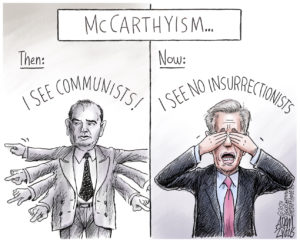
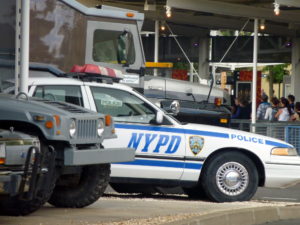

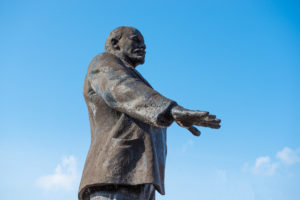
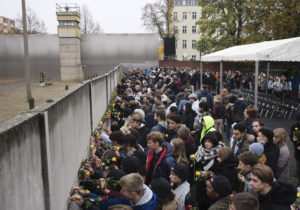
You need to be a supporter to comment.
There are currently no responses to this article.
Be the first to respond.